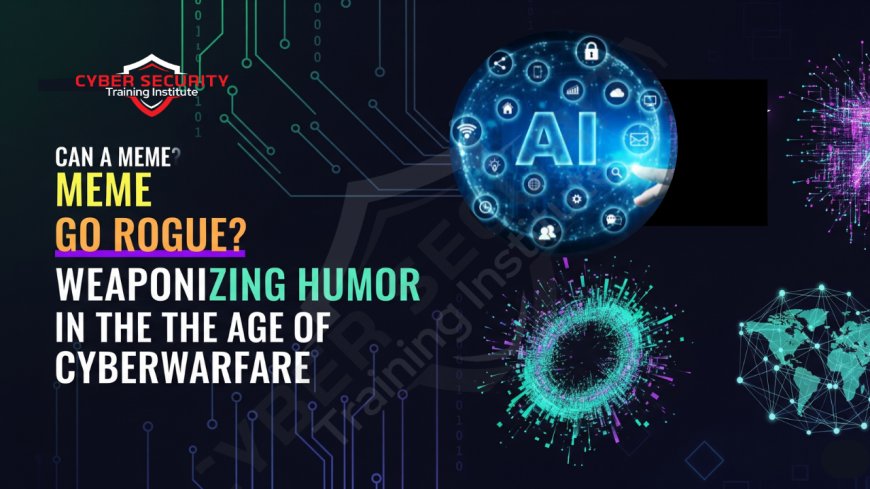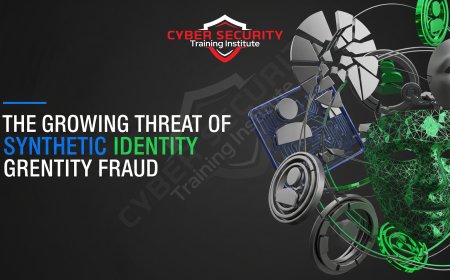Can a Meme Go Rogue? Weaponizing Humor in the Age of Cyberwarfare
Memes are the internet’s love language—funny, relatable, and endlessly shareable. A grumpy cat or a distracted boyfriend can spark laughter across the globe in seconds. But what happens when these bite-sized bursts of humor are weaponized? In the shadowy world of cyberwarfare, memes are no longer just jokes; they’re tools for influence, division, and even chaos. This blog dives into how memes, once innocent, have become potent weapons in digital battlegrounds, exploring their evolution, impact, and the ethical questions they raise.

Table of Contents
- The Evolution of Memes: From LOLs to Lethal
- How Memes Are Weaponized
- Case Studies: Memes in Action
- The Psychology Behind Meme Warfare
- Ethical Dilemmas of Meme Warfare
- Countering Rogue Memes
- Conclusion
- Frequently Asked Questions
The Evolution of Memes: From LOLs to Lethal
Memes started as simple internet gags—think “Rickrolling” or “Doge.” They were quirky images or videos paired with clever captions, shared for laughs. The term “meme” comes from Richard Dawkins’ 1976 book The Selfish Gene, where he described memes as ideas that spread like viruses. Fast forward to the internet age, and memes became a cultural phenomenon, thriving on platforms like Reddit, Twitter (now X), and TikTok.
But as social media grew, so did the potential for memes to carry more than humor. By the 2010s, memes were being used to shape opinions, spread propaganda, and even sway elections. Their simplicity and shareability made them perfect for subtle manipulation. Unlike traditional propaganda, memes don’t feel like lectures—they’re fun, relatable, and sneak past our defenses.
How Memes Are Weaponized
Weaponizing a meme means crafting it to influence, mislead, or divide. Here’s how it works:
- Emotional Triggers: Memes tap into emotions like anger or fear, making them more likely to be shared.
- Simplicity: A single image with a catchy phrase can convey a complex idea faster than a news article.
- Anonymity: Memes can be created and shared anonymously, making it hard to trace their origins.
- Viral Spread: Social media algorithms prioritize engaging content, so provocative memes spread like wildfire.
Bad actors—state-sponsored groups, trolls, or hacktivists—exploit these traits. They create memes that look harmless but carry divisive messages, often targeting specific groups to sow discord or amplify existing tensions.
Case Studies: Memes in Action
Let’s look at real-world examples where memes played a role in cyberwarfare:
| Event | Description | Impact |
|---|---|---|
| 2016 U.S. Election | Memes spread by foreign actors on social media amplified political divides. | Increased polarization and mistrust in institutions. |
| Brexit Campaign | Memes mocked opposing views, simplifying complex issues into slogans. | Influenced public sentiment, especially among younger voters. |
| Hong Kong Protests (2019) | Protesters used memes to mock authorities and rally support. | Gained global attention but also provoked censorship. |
These cases show how memes can be both a tool for activism and a weapon for manipulation, depending on who’s behind them.
The Psychology Behind Meme Warfare
Why are memes so effective? It’s all about how our brains work. Memes exploit cognitive biases—mental shortcuts we use to process information. For example:
- Confirmation Bias: We’re drawn to memes that align with our beliefs, making us more likely to share them.
- Bandwagon Effect: If a meme is trending, we feel pressured to join in, amplifying its reach.
- Emotional Resonance: Memes that make us laugh or angry stick in our minds longer than dry facts.
Combine this with the dopamine hit we get from social media likes, and memes become addictive carriers of ideas—good or bad.
Ethical Dilemmas of Meme Warfare
Using memes as weapons raises tough questions. Is it okay to spread a meme if it’s technically a lie but serves a “greater good”? What about memes that incite division or violence? The line between humor and harm is blurry. Governments and corporations face pressure to regulate content, but censorship risks stifling free speech. Meanwhile, creators—whether activists or trolls—often argue they’re just “joking.” Balancing humor, truth, and responsibility in the digital age is no easy task.
Countering Rogue Memes
Fighting weaponized memes isn’t simple, but there are strategies:
- Media Literacy: Teach people to spot manipulative content by checking sources and intent.
- Counter-Memes: Create memes that debunk falsehoods with humor, meeting fire with fire.
- Platform Moderation: Social media companies can flag or limit the spread of harmful content, though this is controversial.
- Transparency: Encourage creators to disclose their identities or affiliations to reduce anonymous propaganda.
Individuals can also play a role by pausing before sharing and asking: Is this meme accurate? Who made it? What’s their goal?
Conclusion
Memes are more than just internet jokes—they’re powerful tools that can shape opinions, spark movements, or fuel division. In the age of cyberwarfare, their ability to go viral makes them both a creative outlet and a potential weapon. Understanding how memes are weaponized, recognizing their psychological pull, and promoting media literacy are key to navigating this digital minefield. As we laugh and share, let’s stay mindful of the power behind the pixels. The next meme you see might be more than it seems.
Frequently Asked Questions
What is a meme in the context of cyberwarfare?
A meme is an image, video, or text that spreads rapidly online, often with a humorous twist. In cyberwarfare, it’s used to influence opinions or sow discord.
How do memes spread so quickly?
Memes are simple, emotional, and shareable, amplified by social media algorithms that prioritize engaging content.
Can memes really influence elections?
Yes, memes can amplify divisive narratives or misinformation, subtly shaping voter perceptions, as seen in the 2016 U.S. election.
Who creates weaponized memes?
State actors, hacktivists, trolls, or even well-meaning activists can create memes to push agendas.
Are all memes dangerous?
No, most memes are harmless fun. Only those designed to mislead or divide pose risks.
How can I spot a weaponized meme?
Look for emotional triggers, lack of sources, or divisive messages. Check who posted it and their intent.
What’s the role of social media platforms?
They amplify memes through algorithms but also face pressure to moderate harmful content.
Can memes be used for good?
Yes, memes can raise awareness or inspire action, like during the Hong Kong protests.
Why are memes so persuasive?
They tap into emotions and cognitive biases, making them memorable and shareable.
What’s the difference between a meme and propaganda?
Memes are informal and humorous; propaganda is often formal and explicit. Memes can be propaganda in disguise.
How do memes affect mental health?
Divisive or toxic memes can increase stress or polarization, while positive ones can boost mood.
Can governments regulate memes?
They can try, but regulating memes risks limiting free speech and is hard to enforce.
What’s a cognitive bias?
It’s a mental shortcut that influences how we process information, like believing something because it feels true.
How do I avoid sharing harmful memes?
Pause before sharing, verify the source, and consider the meme’s intent.
Are memes protected by free speech?
Generally, yes, unless they incite violence or spread illegal content, but laws vary by country.
Can AI create weaponized memes?
Yes, AI can generate memes, but humans typically guide their intent and distribution.
How do memes compare to traditional media?
Memes are faster, cheaper, and harder to trace, making them more agile than traditional media.
What’s the future of meme warfare?
As AI and social media evolve, memes will likely become more sophisticated and targeted.
Can memes start real-world conflicts?
They can escalate tensions by spreading misinformation, but they’re usually one part of a larger conflict.
How can I learn more about media literacy?
Check online resources, take courses, or follow organizations like Media Literacy Now.
What's Your Reaction?
 Like
0
Like
0
 Dislike
0
Dislike
0
 Love
0
Love
0
 Funny
0
Funny
0
 Angry
0
Angry
0
 Sad
0
Sad
0
 Wow
0
Wow
0







![How to Install RHEL 10 on VMware/VirtualBox [Tutorial]](https://www.cybersecurityinstitute.in/blog/uploads/images/202509/image_430x256_68b56dc967a4a.jpg)






